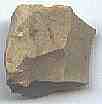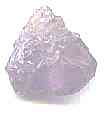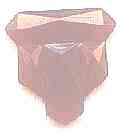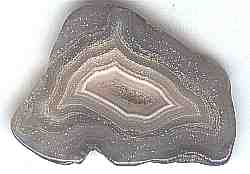The Bead Site =Home>Beadmaking & Materials>Stones > Quartz
Quartz, Number One Bead Mineral
Quartz (silicon dioxide) is the most abundant free mineral on Earth and a major rock former. The sands of beaches and deserts, gravel on roads, sandstone cliffs and much more is made of quartz. It is also the major ingredient in most glass.
With a hardness of seven it is durable and suitable for gem use. It comes in a bewildering variety of colors and patterns. It is the premiere mineral for beads. Quartz is divided into four subvarieties:
|
There are many varieties of each of these and there are ways to alter them.
Plain crystalline quartz is called rock- or quartz crystal. One of the most used quartz varieties is purple amethyst (left). In the center is pink-colored rose quartz. Quartz may also include other minerals, making different varieties. At right is tiger-eye in which the quartz has replaced asbestos fibers.
|
Chalcedony is usually gray or white. Colored varieties also exist, such as this rather rare blue chalcedony (center). The chalcedony variety most widely used for beads is the red carnelian (right)
|
As seen below, there is yellow, red and green jasper. Plain jasper is called flint or chert. One variety (far right) is green with flecks of red, known as bloodstone.
|
Of all the groups of quartz minerals, the most complex and variable are the agates. Agates are chalcedony with structures, either of included materials or internal banding. There are many varieties; over 300 names are widely used.
|
Historically the most important agate variety is known as Baba Ghor Agate or babaghoria
It comes from the agate mines of Ratanpur, India.
Named for the patron saint of the industry, the term has been in use for hundreds of years. The gray and white banding is not exclusive to the region, but the large amount of it and long exploitation make it an important variety.
|
Many people are surprised to learn that several of the most famous quartz varieties are always, or nearly always, altered into their gem state by humans.
Thanks, Sindi
________________________________________________
Small Bead Businesses | Beading & Beadwork | Ancient Beads | Trade Beads
Beadmaking & Materials | Bead Uses | Researching Beads | Beads and People
Center for Bead Research | Book Store | Free Store | Bead Bazaar
Shopping Mall | The Bead Auction | Galleries | People | Events
The Bead Site Home | Chat Line | Contact Us | Site Search Engine | FAQ
















